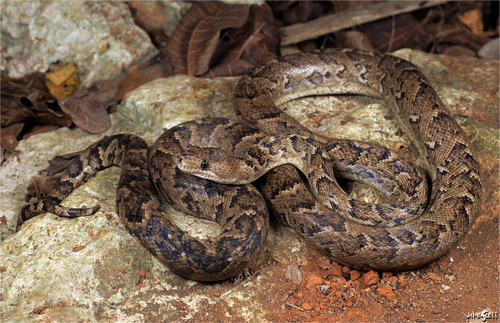
Cuban Boa
The Cuban boa, Chilabothrus angulifer, dazzles with iridescent scales and arboreal prowess. Roaming Cuba's forests and swamps, this nocturnal hunter preys on birds and mammals, playing a vital role in controlling pest populations. Its robust form and climbing skill make it a captivating forest dweller.
20 years
Lifespan
Length: 6.40188 m
Size
Brown, Grey, Fawn, Black, Tan, Dark, Caramel
Color
3-5 years
Age of Sexual Maturity
Low
Aggression
Least Concern
Conservation Status
Stable
Population Trend
Characteristics
Chilabothrus angulifer, commonly known as the Cuban boa, is a large non-venomous snake native to Cuba. It inhabits forests, swamps, and rocky areas. These boas are known for their robust build, iridescent scales, and a remarkable ability to climb trees. They are nocturnal predators, primarily feeding on birds and small mammals.
Distribution Range of the Cuban Boa
Chilabothrus angulifer, commonly known as the Cuban Boa, is native to the island of Cuba and some of its surrounding islets. This species is endemic to this region, meaning it is not naturally found anywhere else in the world.
Cuban Boa's Habitat
Environmental Conditions
The Cuban Boa typically inhabits a variety of environments on the island, including dry forests, wet forests, swamps, and coastal areas. The climate in these regions is tropical, characterized by high humidity and temperatures that range from 20°C to 30°C (68°F to 86°F). Seasonal variations include a wet season from May to October and a dry season from November to April.
Ecological Niche
Chilabothrus angulifer is a terrestrial and arboreal species, meaning it can be found on the ground as well as in trees. It plays a crucial role in its ecosystem as a top predator, primarily feeding on small mammals, birds, and occasionally reptiles. This boa is known for its ability to adapt to different environmental conditions, allowing it to thrive in various habitats across the island.
Copyright @ Nature Style Limited. All Rights Reserved.
 English
English